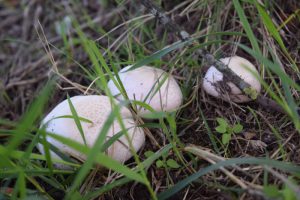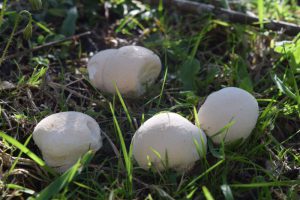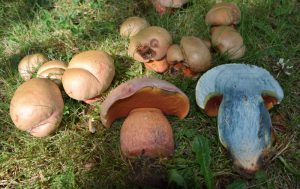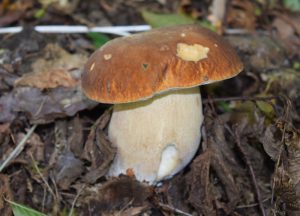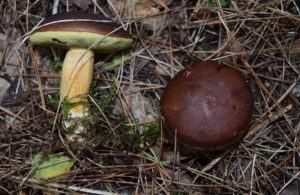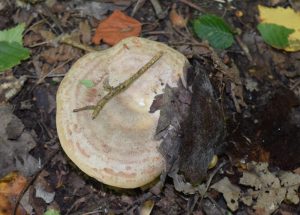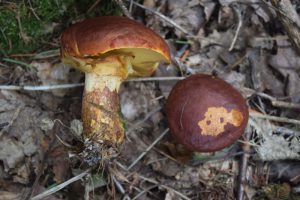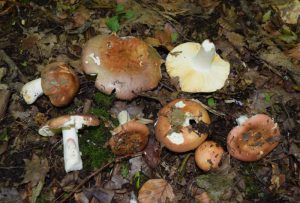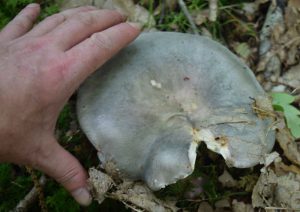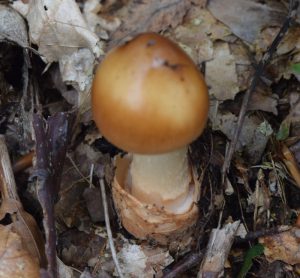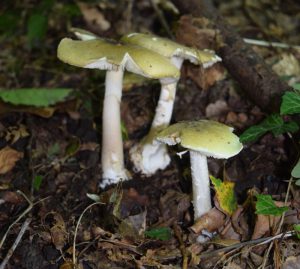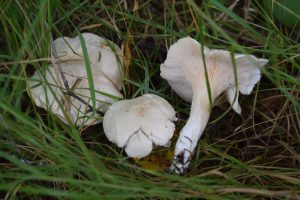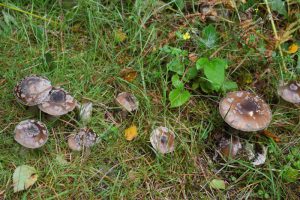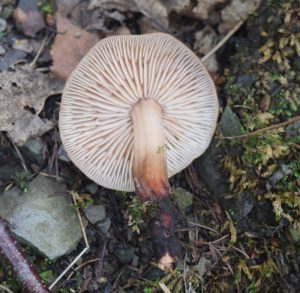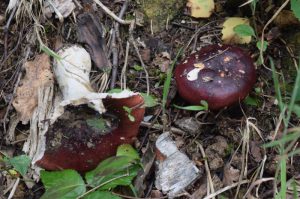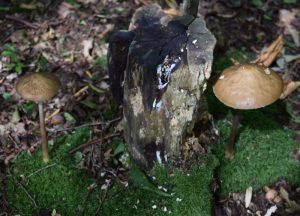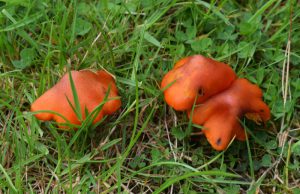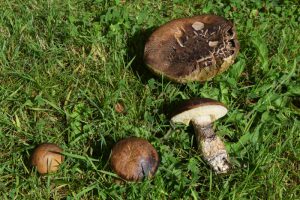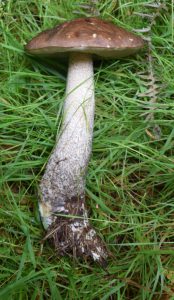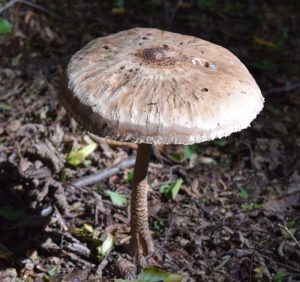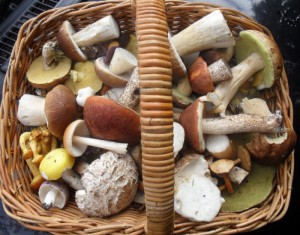Email: geoff@geoffdann.co.uk
04/08/2017
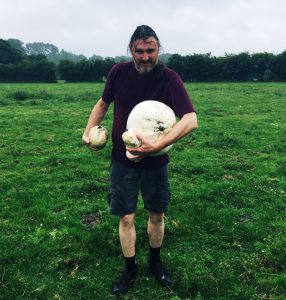
Giant Puffballs. This photo was taken in very wet weather last week. There were about 25 of them in the same field. It is a classic year for this species.
WOW! What a stunning start to this year’s mushroom season. I have seen it start with a bang in early September before, but I have never before seen anything like what I’ve seen today. Penny Buns a-plenty, loads of other boletes including two I’ve never found before, masses of Russulas (Brittlegills), all sorts of members of the Agaricaeae, plenty of Amanitas and a lovely selection of other stuff including some that don’t normally fruit until the start of October. I have no idea why things have gone so crazy so early – perhaps something to do with two unspectacular previous years, or perhaps the fungi just like this year’s weather. The plants are early too – things like blackberries and plums in fruit earlier than normal. What this indicates for the coming autumn I do not know. Maybe it is going to be an absolutely storming year for mushrooms. Or maybe this is a flash in the pan and it is all going to go very quiet in the autumn. Either way, NOW is the time to get out there if you want to find some good late summer fungi. The situation in Kent and Sussex is better for fungi than I have seen it at any time since the peak of the 2014 season in October that year. Given that the season has started early, I have very few bookings for what might be the best time to go mushrooming this year. Please contact me if you want to get a group together, or arrange some personal tuition. I was with somebody from northern Italy today, who told me it was the best day’s mushrooming he’s ever experienced.
The first of these photos was taken last week (by journalist Sophie Haydock – thanks Sophie!), and perhaps the torrential rain on the morning it was taken has helped with the current flush. All the other photos were taken today. This is not a complete record of what we found today, just the most interesting from a foraging point of view.
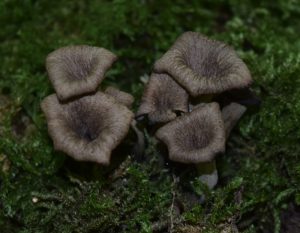
Horn of Plenty. At the start of August!!! More typically this species fruits in October. The best of the best. Woo-hoo!
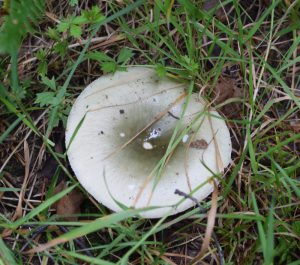
Green Brittlegill. Good edible, but can be mixed up with some poisonous species if you don’t know what you are doing…
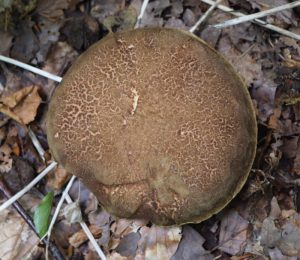
One of the small Xerocomus species. Not so many of these today, and hardly exciting as edible fungi go.
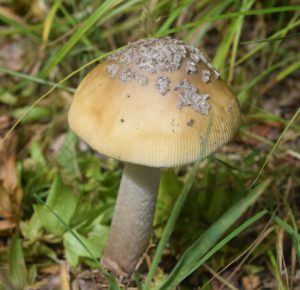
Snakeskin Grisette. Wrongly believe to be poisonous by many people, including Roger Phillips. Excellent edible species (must be cooked), but for experts only (too similar to a Deathcap).
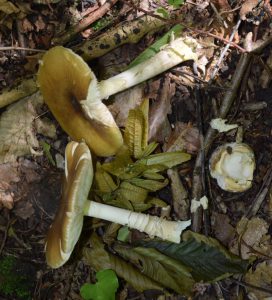
Deathcaps, knocked over, probably deliberately by some **** who thinks destroying poisonous fungi is a socially acceptable pastime.
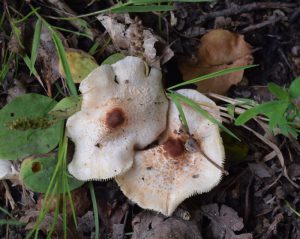
Stinking Dapperling. Not for the pot! Although unlike some of its relatives, this one won’t kill you.
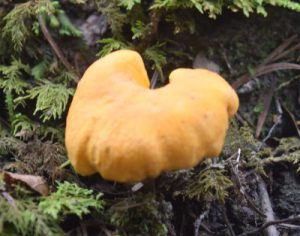
Chanterelle – looking rather lonely and out of focus. We saw a few of these today, but not worth picking. I found a better patch last night while walking the dog and ate them for my breakfast this morning.
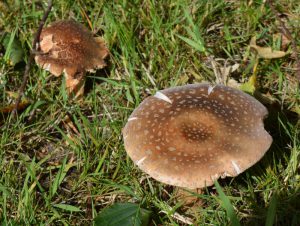
The Blusher. Fruiting in abundance right now. Excellent edible if you can avoid mistaking a Panthercap for it.
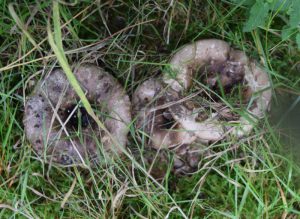
Blackening Brittlegill in edible state, but hardly worth bothering about when there’s such a bounty of other stuff available.
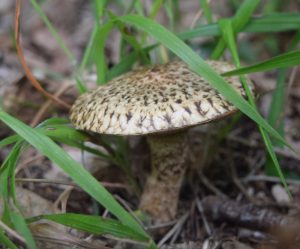
A rather shaggy Sticky Bolete. Uncommon, and though edible it is not worthwhile and should be left to multiply.

